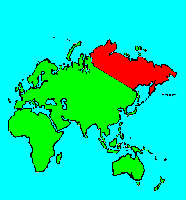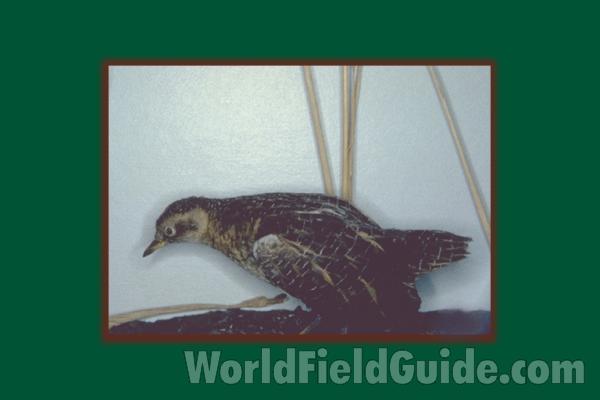SPECIES INFO
Yellow Rail (Coturnicops noveborascensis) breeds from New Brunswick in Canada and Maine in the United states in a wide band in a westerly direction to the Northwest Territories of Canada. This has been recorded in eastern Alaska. This breeds rarely in western Canada and can be sometimes found wintering in California and further south. This primarily winters in the south eastern United States from the Carolinas to Texas including most of Florida. (It is also found in the eastern Palearctic. But those individuals might be placed in a different species.) This rail does not reach beyond 8 inches of head and body length. There is a short tail, and a dark band through the eye. The young chicks are solid black. Barry Taylor does not acknowledge the Oriental presence of this species.
There are two subspecies. The second subspecies, goldmani of Mexico, has not been seen since 1964 and is probably extinct.
This species is listed in the American Bird Conservancy Guide published in 2010. It was estimated that the global population was between 10,000 and 25,000 individuals.Rail genus Coturnicops contains three species. One is found in South America, and another is found in North America. A third species is found in the northern Orient. These are all small species with short bills.
Rails, Crakes, Gallinules, and Coots (Family Rallidae) is a worldwide family of 132 species of primarily wading birds. In 1998, Taylor and van Perlo published a major work on this group of birds. They counted 150 species of which fifteen had been extinct since 1600; another two species they feel were certainly extinct at the time. These authors contend 133 species are in existence. It is interesting to observe that all of the extinctions occurred prior to 1950 and most all (except for three) occurred prior to 1900. The losses were all from species found on various islands in the various oceans. Many of these species were flightless birds that fell victim to introduced carnivores. However, another thirty-three (probably less two extinct) species are now formally listed as threatened with extinction.
The majority of the rail and crakes are small secretive birds that are found in wet marshes and wet meadows. In many instances it is difficult to determine the rarity of any specific species. These birds frequently run from predators as opposed to flying away.
Cranes and Rails (Order Gruiformes) are a worldwide group of 199 species, some of which have recently become extinct. They are medium to large in size and usually associated with water. Several species have long legs and/or long necks.
Aves contains about 8,650 different species of living birds known to science. Each year about one new species is discovered in some remote rain forest or remote island. In addition, scientists have been raising many subspecies to full species status which may raise the species count to 10,000. Birdlife recognizes 10,027 species as of 2011.
However, each year about one species goes extinct. The rate of extinction is increasing, and the rate of new discovery is decreasing, so that the number of bird species will soon begin to decline rapidly. Although different taxonomists would organize the birds differently, there are approximately twenty-seven orders of birds. These orders are broken down into about one hundred and fifty-five different families.
Recent research of the genetic structure of some of the shore birds and owls would indicate that the present organization of orders and families should have some modification.
The birds are a worldwide group of animals that are characterized by having the front limbs modified into wings that are used for flying. Perhaps the most unique feature of the birds is the feathers. These feathers are made up of a central support called a quill and a series of small filaments that are hooked together as barbs.
For many years it was believed that Archaeopteryx discovered in Bavaria was the oldest bird from about 150 million years ago. However, in l986, Sankar Chattterjee, a Texas paleontologist, reportedly discovered a bird in the genus Protoavis that lived about 225 million years ago.
When this project was begun in 1978, we used Austin & Singer for bird taxonomy. Since then, we have adopted many changes, but have kept some older concepts that are still found widely in the literature. Recently, we have used Clements and Howard & Moore. Very recently, we have used Monroe and Sibley for the higher taxonomy of the perching birds.
Backboned Animals (Phylum Chordata) are the most advanced group of animals on earth. These animals are characterized by having a spinal cord or backbone. Most members have a clearly defined brain that controls the organism through a spinal cord. Fish, amphibians, reptiles, birds, and mammals are in this phylum.
Currently, some taxonomists believe that the fish should be divided into two groups (sharks and regular fishes) and that there are some other primitive groups in the phylum such as hagfish or lampreys.
Animal Kingdom contains numerous organisms that feed on other animals or plants. Included in the animal kingdom are the lower marine invertebrates such as sponges and corals, the jointed legged animals such as insects and spiders, and the backboned animals such as fish, amphibians, reptiles, birds, and mammals.




